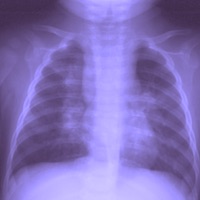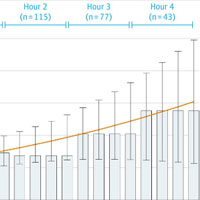Stories Category: PICU

High Flow Nasal Oxygen for Acute Bronchiolitis?
Since bronchiolitis is a clinical diagnosis, there is no test, including viral testing and radiography, which rules it in or out (Schuh et al 2007). Sadly, despite multiple guidelines (NICE, AAP, CPS), there has also been... read more

Lumping or Splitting in Pediatric ARDS
Improvements in acute respiratory distress syndrome (ARDS) outcomes in adults have been achieved along-side demonstration of the superiority of low-tidal volume ventilation, the relative advantage of a restrictive fluid strategy... read more

Hospital Variation in Risk-Adjusted Pediatric Sepsis Mortality
Margaret Parker, MD, MCCM, speaks with Stefanie G. Ames, MD, about the article "Hospital Variation in Risk-Adjusted Pediatric Sepsis Mortality," published in the May 2018 issue of Pediatric Critical Care Medicine. Dr. Ames... read more

Sepsis Around the Cradle of Humankind
While representing the cutting edge of civilization everywhere, mothers and their newborn infants are a population particularly vulnerable to sepsis.1 By recognizing the importance of antiseptic prophylaxis (handwashing),... read more

No Requirement for Targeted Theophylline Levels for Diuretic Effect of Aminophylline in Critically Ill Children
Aminophylline administration provided a measure of increased diuresis, regardless of dosage, and theophylline trough levels. Therefore, achieving a prescribed therapeutic trough level may not be necessary for full diuretic... read more

Comparison of Complication Rates of Central Venous Catheters Versus Peripherally Inserted Central Venous Catheters in Pediatric Patients
Rates of central line–associated bloodstream infection and venous thromboembolism were higher in hospitalized pediatric patients with peripherally inserted central catheters as compared to central venous catheters. Our... read more

Hemodynamic Tolerance to IV Clonidine Infusion in the PICU
Although administration of clonidine is often associated with bradycardia and hypotension, these complications do not seem clinically significant in a mixed PICU population with a high degree of disease severity. Clonidine... read more

Functional Recovery in Critically Ill Children, the “WeeCover” Multicenter Study
This study provides new information regarding functional outcomes and the factors that influence meaningful aspects of functioning in critically ill children. Identifying patients at greatest risk and modifiable targets for... read more

Functional Status Change Among Children With ECMO to Support Cardiopulmonary Resuscitation in a Pediatric Cardiac ICU
This is the first extracorporeal cardiopulmonary resuscitation report to examine changes in Functional Status Scale from admission (baseline) to discharge as a measure of overall functional outcome. Half of surviving patients... read more
Variability in Antibiotic Use Across PICUs
Margaret Parker, MD, MCCM, speaks with Thomas V. Brogan, MD, about the article "Variability in Antibiotic Use Across PICUs," published in the June 2018 issue of Pediatric Critical Care Medicine. Dr. Brogan discusses study... read more

Association Between the New York Sepsis Care Mandate and In-Hospital Mortality for Pediatric Sepsis
In New York State following a mandate for sepsis care, completion of a sepsis bundle within 1 hour compared with not completing the 1-hour sepsis bundle within 1 hour was associated with lower risk-adjusted in-hospital mortality... read more

Pediatric Sepsis Care Within an Hour Decreases Chance of Death
More than one in 10 children hospitalized with sepsis die, but when a series of clinical treatments and tests is completed within an hour of its detection, the chances of survival increase considerably, according to a new... read more

Chest Compression Rates and Pediatric In-hospital Cardiac Arrest Survival Outcomes
Non-compliance with compression rate Guidelines was common in this multicenter cohort. Among ICU patients, slightly lower rates were associated with improved outcomes compared to Guidelines.Prospective observational study... read more

Collective Quality Improvement in the Pediatric Cardiology Acute Care Unit
Collaborative quality improvement and learning networks have amended healthcare quality and value across specialities. Motivated by these successes, the Pediatric Acute Care Cardiology Collaborative (PAC3) was founded in... read more




